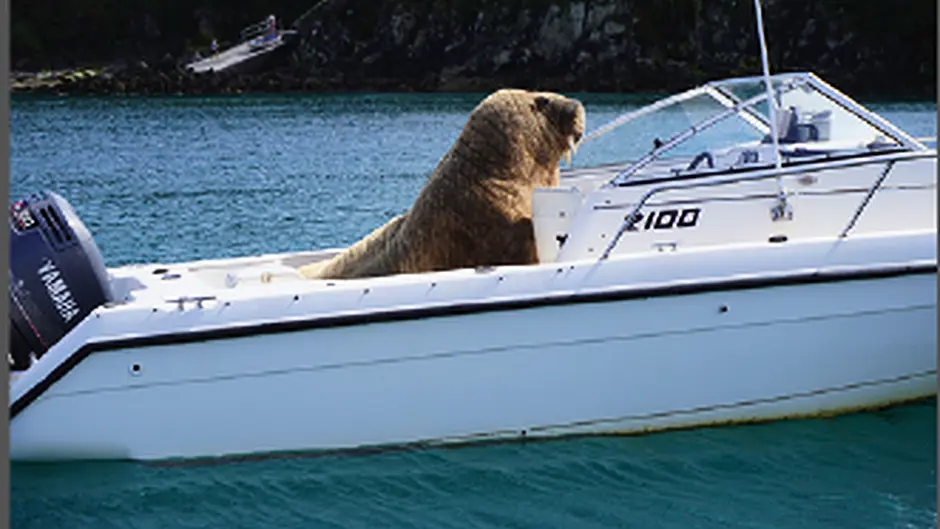THE planned growth in windfarms around our coasts could act as ‘stepping stones’ for invasive species to migrate into our waters, so ‘Wally’ the walrus sightings could become far more common, a fishing lobbyist has said.
Wally made quite an impression on West Cork in 2021, damaging speed boats from Clonakilty to Croohaven, and attracting hundreds of onlookers.
But now fishing interests believe that walruses, and other unexpected – or perhaps invasive – species will be facilitated by the proliferation of these large windfarms around our coasts. These large marine constructions will provide effective ‘stepping stones’ or rest areas for many species to migrate around the world’s seas, in ways which were impossible in the past.
Aontú Euro elections candidate and fishing lobbyist Patrick Murphy said these concerns were raised when fishing industry representatives from across Europe met in London recently, where the Northern Fishing Alliance was formed.
The group discussed the cumulative effect from the combined planned offshore windfarm projects and their impact on sensitive marine eco-systems.
‘The members of the Alliance feel our governments have not been listening to the fishing industries of Europe, nor have they properly thought through the effect these projects will have on the animals that inhabit our oceans and seas,’ he told The Southern Star.
‘One concern is that these structures will provide rest areas for animals – like our 2021 visitor Wally the walrus – to allow them to travel from their native waters to ours in Europe, bringing unknown consequences to our native marine fish and animals,’ he said.
‘Fishermen’s representatives from around Europe met up because of our overwhelming concern about what is happening to our seas,’ he added. ‘Fishing has provided livelihoods, sustained communities and strengthened our countries’ abilities to feed ourselves for thousands of years. All of this is now at risk, as new regulations and vast industrial developments move ahead at an unprecedented pace with little thought for the consequences.’
He claimed that governments are seeking political advantage while energy firms ‘scent huge profits from short-lived but massive’ offshore power stations.
‘We fear that our fisheries and our communities may be swept away in this rush to grab the seas for new purposes. We call on governments to consider the security of our food supplies, the health of the marine environment, and the lives and livelihoods of ordinary citizens. There must be a real dialogue about how our natural resources can best be used, a dialogue informed by the facts about what these new proposals will do and which respects the voices of traditional sea users as equals,’ he said.
And he said there was much concern expressed about the lack of research into how windfarm developments will now function as ‘stepping stones’ for invasive species to move freely around the world’s coasts.
However, UCC zoology lecturer Dr Mark Jessop said he believed it was ‘possible but highly unlikely’ that windfarms would bring a major influx of invasive species.
He said that some ‘very small encrusting species’ had been seen on windfarm platforms but there was more of a risk of species being moved about by aquaculture or shipping. ‘We have seen very few species sub-tidally on wind turbines,’ he said, adding that the likes of Wally the walrus would find it difficult to access windfarms whose platforms are usually higher than sea level, and can only be accessed via ladders.
‘I am not saying it’s completely impossible that we will see more invasive species, but they are more likely to attach to the hulls of ships or be taken in during the exchange of ballast water,’ he added.
Dr Jessop also said the likes of cormorants or shags may be seen roosting on some platforms and that some fish are also noise-sensitive, like herring, and may be disturbed by noise during the construction phase.
But research also shows that this dispersal of stocks is often only temporary and they many return later to the site, while some structures even act as ‘reefs’ and actually attract some fish species to them.








